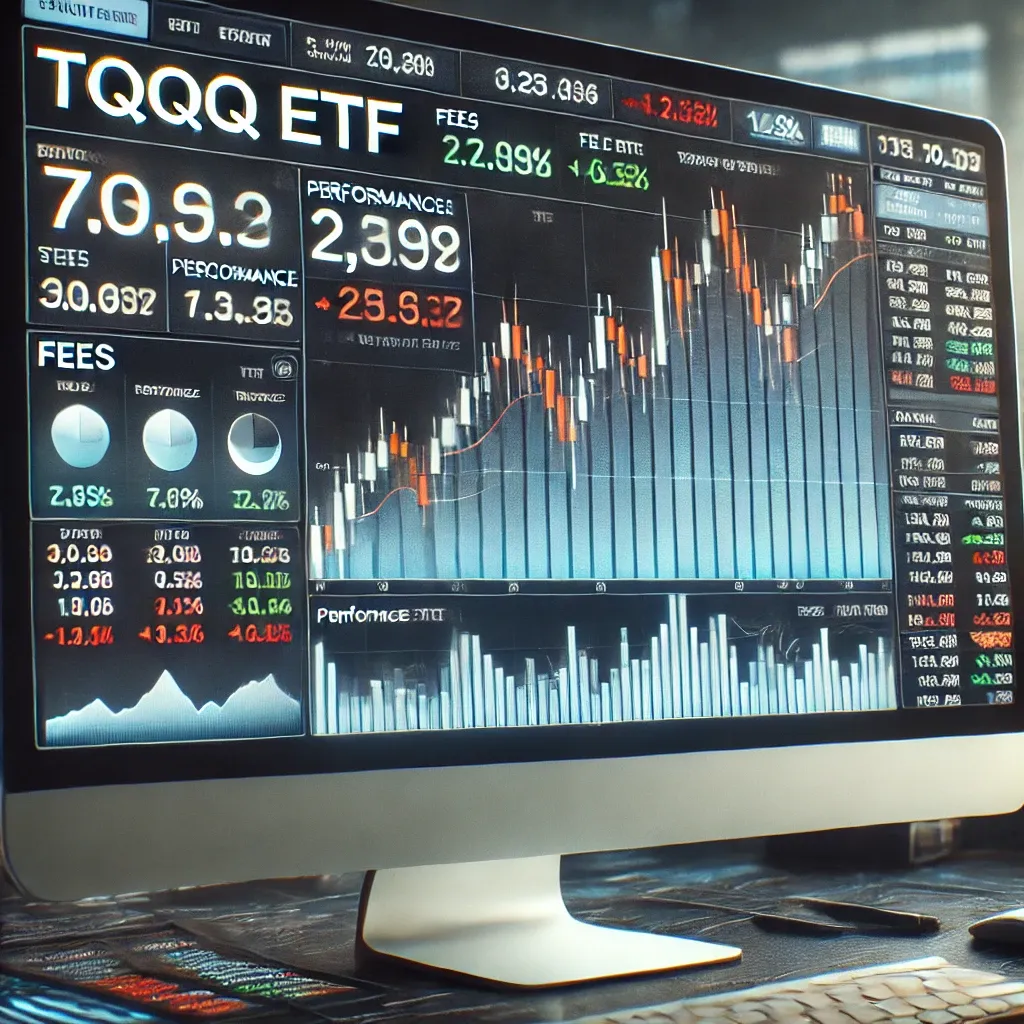:
Curious about the hidden costs of TQQQ? How do fees impact your returns on this leveraged ETF? Explore the key details to ensure you maximize your trading profits with TQQQ fees in mind.
TQQQ Fees: What You Need to Know
When trading ProShares UltraPro QQQ (TQQQ), it’s essential to fully understand its fee structure, as this will directly affect your returns. TQQQ is one of the most popular leveraged ETFs, which aims to deliver three times the daily performance of the NASDAQ-100 index. However, there are specific costs involved in maintaining a position in TQQQ, and these fees can erode your profits if not carefully monitored.Expense Ratio:
TQQQ has an annual expense ratio of 0.95%, meaning that for every $1,000 invested, approximately $9.50 is charged in fees yearly. This might seem small at first glance, but with leveraged ETFs, especially those held for more extended periods, these fees can quickly add up. Leveraged ETFs like TQQQ are typically designed for short-term trading strategies, so understanding how the expense ratio works is crucial.Management Fees:
As part of the total expense ratio, the management fee covers the costs associated with the operations of the ETF. This includes paying portfolio managers, administrative expenses, and compliance costs. For TQQQ, the management fee is already included in the 0.95% expense ratio, but investors need to be aware of this ongoing cost as part of their overall strategy.Financing Costs:
Leveraged ETFs like TQQQ use derivatives and borrowed funds to amplify the returns of the underlying index. Borrowing comes with financing costs, which are baked into the price of the ETF. These costs aren’t typically transparent in the same way as management fees, but they do exist and can add up, especially if held over extended periods.In addition to the explicit fees like the expense ratio, there are also indirect costs that traders need to consider:
- Bid-Ask Spread: The difference between the buying price and the selling price can vary, especially in volatile markets. These spreads can be wider for leveraged ETFs like TQQQ, particularly if you’re trading in large volumes or during times of lower liquidity.
- Slippage: When placing market orders, slippage occurs when the execution price is different from the expected price. This can happen due to high volatility or market movements, which can be particularly relevant in a product like TQQQ that tracks a highly volatile index.
- Decay: The effect of compounding can work against traders over time in leveraged ETFs. Even though TQQQ is designed for short-term trades, holding it for long periods, especially in sideways or volatile markets, can lead to a phenomenon known as “decay,” where the ETF’s value erodes despite the underlying index not moving significantly.
- Tax Considerations: TQQQ is a taxable investment, and the gains from trading TQQQ are subject to capital gains tax. Additionally, dividends, though minimal, might still be subject to taxes depending on your jurisdiction.
By being aware of these fees and costs, investors can more effectively plan their trading strategies. Those considering TQQQ should always weigh the potential amplified returns against these associated fees and the risks of holding such a leveraged product.
TQQQ CFD: Pros and Cons of Trading Contracts for Difference
CFDs (Contracts for Difference) offer an alternative way to trade TQQQ without owning the actual shares. With a CFD, you speculate on the price movement of TQQQ without having to buy or sell the physical ETF. This can provide greater flexibility, but it also introduces new layers of costs and risks that need careful consideration.No Ownership of the Underlying Asset:
When you trade TQQQ as a CFD, you don’t actually own the ETF itself. You are speculating on the price movement instead. This is ideal for traders who want exposure without taking possession of the actual asset, but it does mean missing out on benefits like dividends.Leverage:
CFD trading is inherently leveraged, and this leverage magnifies both gains and losses. Similar to TQQQ, CFDs offer the potential for significant profits if the market moves in your favor. However, losses can also be amplified, making it a high-risk, high-reward product.Lower Capital Requirement:
One advantage of trading TQQQ via CFD is that you don’t need to commit as much capital upfront. This makes it attractive for traders who want exposure to TQQQ but don’t have the funds to purchase large quantities of the ETF.Financing Fees:
With CFDs, traders often incur daily financing fees, particularly when holding positions overnight. These fees are akin to the borrowing costs associated with holding leveraged ETFs, but they can vary depending on the broker and the leverage applied. Traders need to be aware of these financing costs as they can accumulate quickly, especially in longer trades.Spreads and Commission:
CFDs typically come with a spread, which is the difference between the buy and sell prices. This spread can vary depending on market volatility, liquidity, and the broker’s pricing model. Additionally, some brokers charge commissions on CFD trades, so it’s crucial to factor in these costs when calculating potential profits.Market Hours and Liquidity:
While TQQQ trades during standard stock market hours, CFDs often allow for extended trading hours. However, liquidity during off-hours can be lower, which might result in wider spreads or difficulty executing trades.Trading TQQQ through CFDs can be an attractive option for those looking to trade with leverage and lower upfront costs. However, the risks, including financing fees and potential losses, mean this strategy is best suited for experienced traders who understand the complexities of leveraged products.
TQQQ Futures: A High-Risk, High-Reward Strategy
Futures contracts provide another leveraged way to gain exposure to TQQQ, but with futures, the stakes are even higher. These derivative products allow you to speculate on the future price of the underlying ETF, magnifying both potential gains and losses. For those interested in day trading or swing trading, futures offer a unique set of opportunities and challenges.Leveraged Exposure:
Just like TQQQ itself, futures contracts provide leveraged exposure to the NASDAQ-100. However, the leverage in futures can be significantly higher, with traders required to post only a fraction of the contract’s value as margin. This creates the possibility for substantial gains, but also magnifies the risk of large losses.Expiration Dates:
Unlike trading the ETF directly, futures contracts have expiration dates. This means traders must either close their position before the contract expires or roll it over into a new contract. Failing to do so can result in automatic closure at potentially unfavorable prices.Margin Requirements:
Futures trading comes with strict margin requirements. Traders must maintain a minimum margin to keep their position open. If the value of the contract moves against them, they may face a margin call and be required to deposit additional funds.High Volatility:
Futures contracts are notorious for their volatility, and this is especially true for TQQQ futures, which amplify the price movement of the NASDAQ-100 index. This volatility presents opportunities for day traders but can also result in rapid losses if the market moves unfavorably.Understanding these nuances is key to effectively trading TQQQ futures.
Conclusion
In conclusion, trading TQQQ—whether through ETFs, CFDs, or futures—presents significant opportunities for those looking to capitalize on the volatility of the NASDAQ-100. However, with these opportunities come various fees and risks. It’s essential to weigh the costs, such as the expense ratio, financing charges, and market risks, before diving into leveraged products. As Warren Buffet once said, “Risk comes from not knowing what you’re doing,” so thorough understanding is crucial in maximizing your trading potential with TQQQ.






